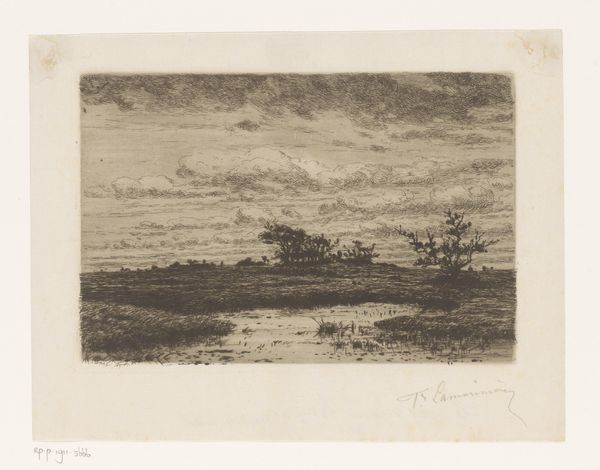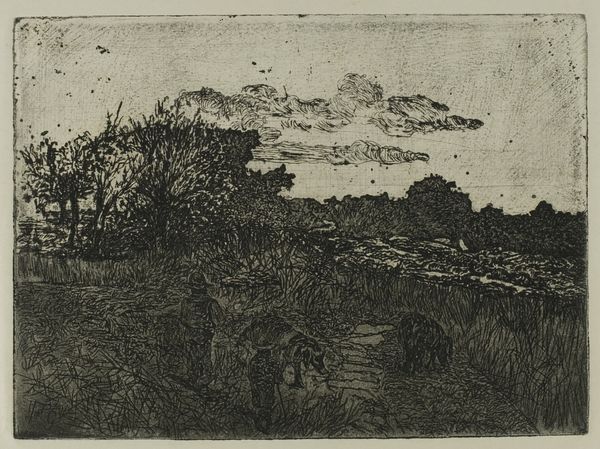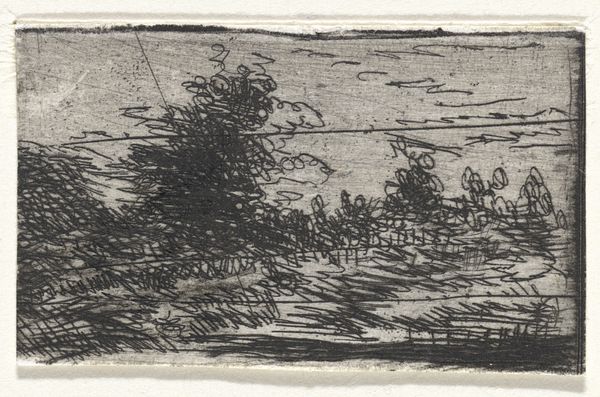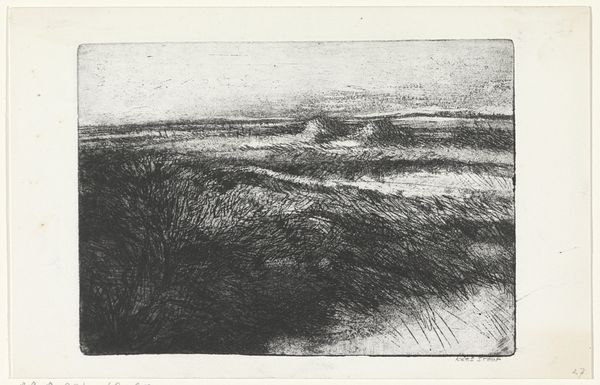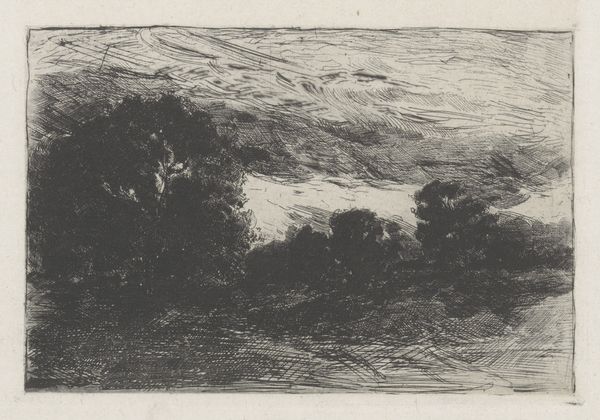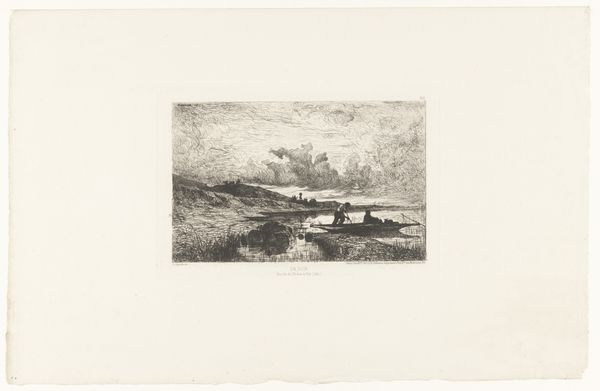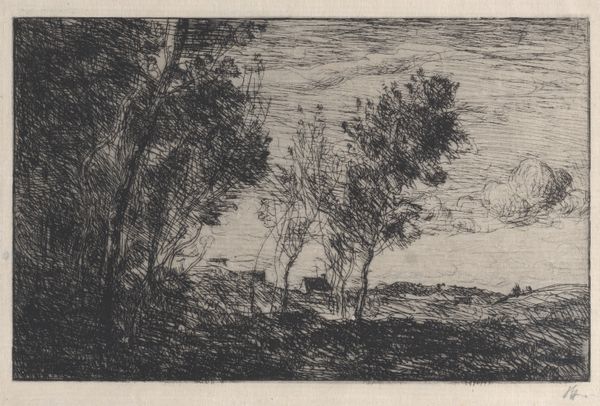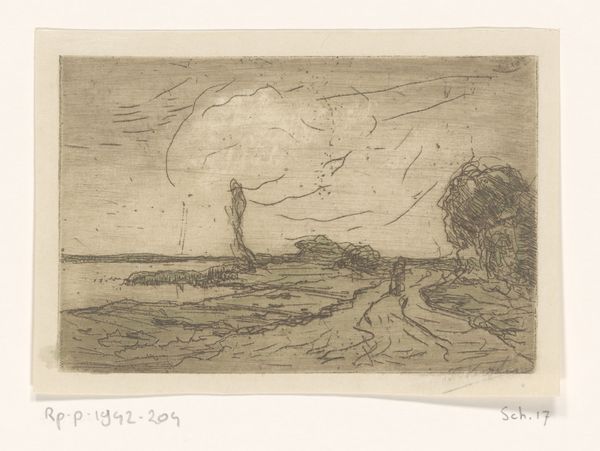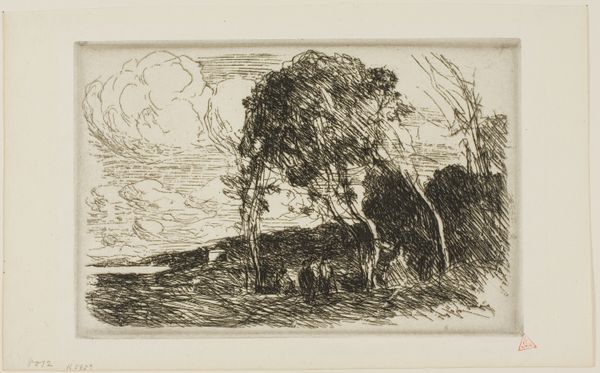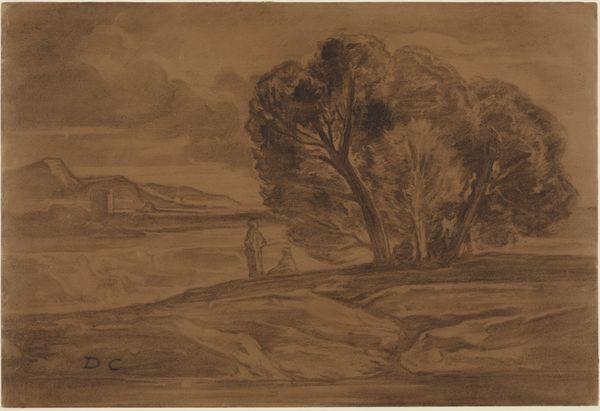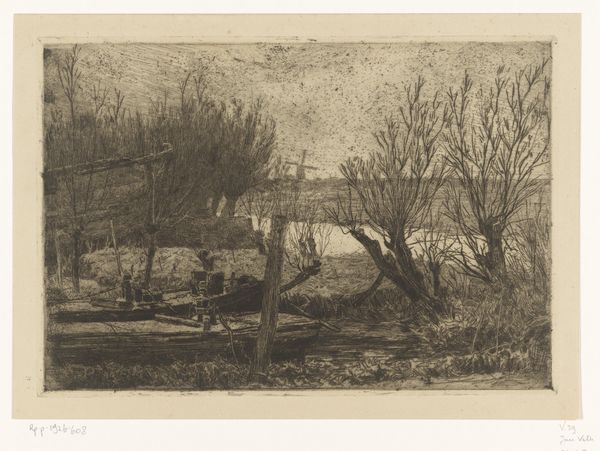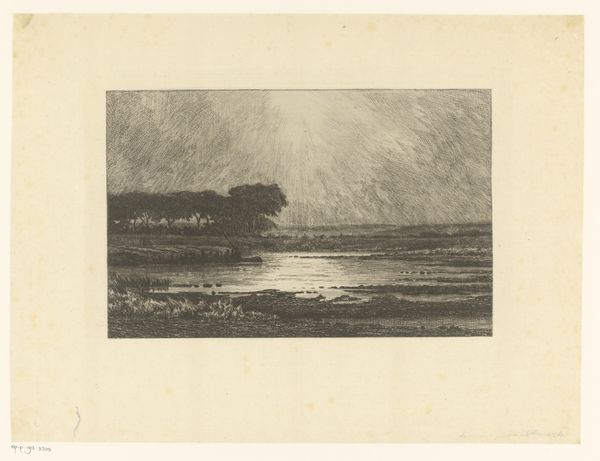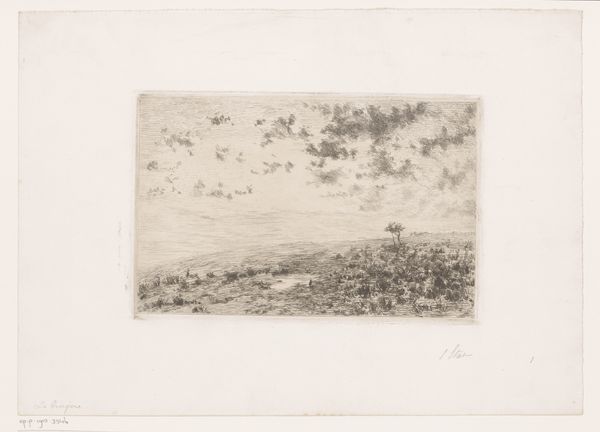
print, etching
# print
#
etching
#
landscape
#
line
#
realism
Dimensions: height 51 mm, width 107 mm
Copyright: Rijks Museum: Open Domain
Editor: We're looking at "Landschap met bomen," or "Landscape with Trees," an etching by Chris van der Windt, likely created between 1887 and 1952. It has a very stark, almost barren feel. What strikes you about this piece? Curator: It's tempting to see this as a purely aesthetic landscape, but let’s consider the context. The period spanning the late 19th and early-to-mid 20th centuries was fraught with social upheaval and two World Wars. How might this landscape be reflecting anxieties of that era? The bareness, the isolation…does it suggest a rupture from nature or even societal collapse? Editor: That's a pretty intense read of a landscape! I was just thinking it was kind of gloomy. The lines are so rough, it almost looks like the land is being scratched away. Curator: Exactly! Consider the artistic movements of the time – increasing urbanization, the rise of industry, and anxieties about losing connection to the land. This etching technique itself—removing material to create the image—mirrors a kind of erasure. Can you imagine how someone rooted in agrarian life might have experienced these changes? Editor: I hadn’t thought about the process that way. So, it's not just trees; it’s about loss. What do you think about the fact that the work does not depict human presence? Curator: The absence is deafening, isn’t it? Whose landscape is this? Has it been abandoned, or transformed so completely that humans are no longer a visible part? It urges us to investigate. How can landscape art engage with historical trauma and societal transitions, questioning our relationship with the land? Editor: I guess I usually see landscapes as pretty and untouched. You’ve given me a lot to rethink. It shows that what is missing from the picture, and its socio-historical background, says so much about the image. Curator: Indeed. By analyzing visual absences and social anxieties together, we gain a fuller appreciation of not only the artwork itself, but of the artist's experiences and world views, along with our own.
Comments
No comments
Be the first to comment and join the conversation on the ultimate creative platform.
